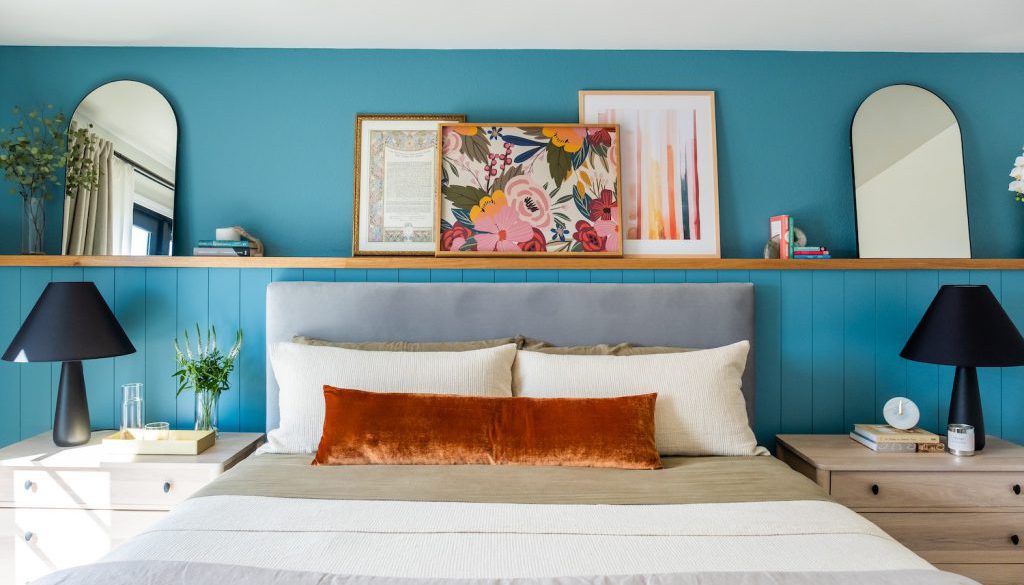Embrace tranquility and elegance with a japanese bedroom design
As more people seek peace and balance in their daily lives, the timeless allure of Japanese interior design has captured the hearts of many. Japanese bedrooms are known for their simplicity, serenity, and natural beauty, providing the perfect sanctuary for rest and relaxation. In this article, we will explore the basics of Japanese bedroom design and share insightful tips on how to create your very own Japanese-inspired sleeping haven.
The Basics of Japanese Bedroom Design
Principles of Zen Design
The Zen philosophy lies at the core of Japanese interior design, emphasizing balance, harmony, and simplicity. These principles inspire a sense of calm and tranquility in Japanese bedrooms, inviting you to leave the outside world behind as you enter your personal retreat. Key aspects of Zen design include minimalism, clean lines, and a neutral color palette, as well as the thoughtful use of natural materials and textures.
Elements of Traditional Japanese Design
Certain traditional elements are intrinsic to Japanese bedroom design. Tatami mats made of natural rice straw typically cover the floor, providing a simple and comfortable surface. Japanese platform beds, or futons, rest directly on the tatami mats, further emphasizing the connection to nature. Shoji screens and sliding doors made from rice paper and wood not only save space but also allow for a seamless and flexible room layout. The overall aesthetics focus on functionality and uncluttered spaces, with minimal furniture and decorations.
Tips for Creating a Japanese Bedroom
Building Your Japanese Bedroom
When creating your Japanese-inspired bedroom, it’s important to consider the various aspects of design, layout, and theme. Here are some tips to help you build your ideal Japanese bedroom:
Choosing a Theme
Decide on the overall theme and ambiance you want to create in your bedroom. You can opt for a more traditional Japanese aesthetic, a contemporary minimalist approach, or even a blend of Japanese and Western design elements. The key is to maintain simplicity, balance, and harmony in your design choices.
Room Layout
Consider the layout of your bedroom, factoring in the placement of your bed, storage spaces, and seating areas. Japanese bedrooms typically remain uncluttered, with a smooth flow around the room. As functional multi-purpose spaces, Japanese rooms can transform from a sleeping area to a living space or even a meditation room, all through the careful arrangement of furniture and the use of sliding doors or shoji screens.
Traditional Element Ideas
Incorporate traditional Japanese bedroom elements such as tatami mats, shoji screens, and platform beds or futons. Remember that incorporating natural materials and textures can help create an authentic and calming atmosphere in your sleeping sanctuary.
Popular Japanese Bedroom Accessories
A Japanese bedroom design would not be complete without some well-chosen accessories that complement the overall theme and enhance the tranquil ambiance. Here are some popular Japanese bedroom accessories to consider:
– Zen-inspired artwork or simple nature prints can add an elegant touch while maintaining the minimalist aesthetic.
– A selection of potted plants, such as bamboo or bonsai trees, can bring nature indoors, fostering a deeper connection with the natural world.
– Traditional Japanese textiles, such as Noren curtains or Yukata robes, can provide a subtle hint of color and pattern while maintaining the neutral color palette.
– Scented candles or essential oil diffusers can help create a relaxing atmosphere with calming fragrances like lavender, jasmine, or sandalwood.
By embracing the elegant simplicity of Japanese aesthetics, you can transform your bedroom into a serene and tranquil retreat. Take the time to carefully consider your design choices, layout, theme, and accessories, and soon you will have a Japanese bedroom where you can unwind, relax, and recharge.



